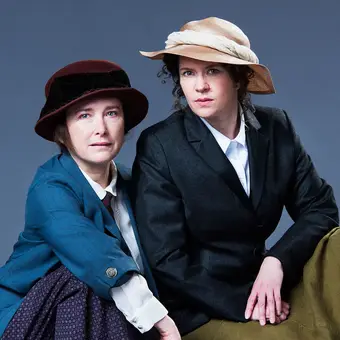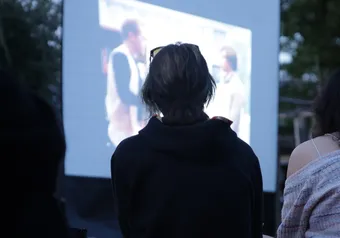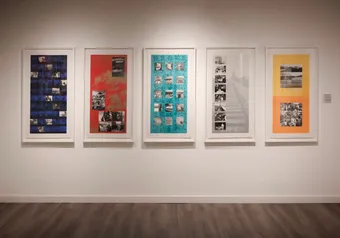Sally Stubbs' And Bella Sang With Us sets itself up to be the voice for a piece of Vancouver’s forgotten female history. It centres around the struggles of Vancouver’s first two female constables as they grapple with the societal and personal pressures of being a woman in a male occupation. The expectations that come with successfully telling this story can lead an audience to become disappointed by the overly cramped plot, fiddly set design and sometimes confusing character changes. Through the use of humour and song, directors Sarah Rodgers and Ian Harmon lead their audience through a shaky exploration of the ways in which stories are told, as they figure out how to tell this one.
What was incredibly interesting about the production was how it engaged the audience into the discussion of gender. Sarah Roa’s mesmerizing song and dance as child prostitute Mai Ji left the audience to question their own complicity in her sexualization as they were invited to ‘take a drink’ and enjoy her performance. It was also a welcoming sight to have a predominantly female cast despite the play having a similar number of male and female characters. However, this also caused some confusion as the only male actor, Simon Webb, was left to play three characters. One of these characters was Connor O’Rourke, a sleazy hustler, who added little to the story as a whole and could have easily been cut from the script. This is not to say that Webb’s performance was bad. In fact, his portrayal of all three characters was exciting and engaging. That being said, his struggle to seamlessly move between the three allowed for some misinterpretation and the play, lasting only 90 minutes, was left feeling cramped.
This was a continuous issue as far too many backstories and characters were introduced superficially without a clear reason as to why, or even enough time to fully develop them. Sarah May Redmond stole the show with her profoundly emotional performance as Bella Boychuk, yet was still limited by the script. The audience was left wondering why Bella was so volatile and what happened to her child, with neither question ever answered.
The set was also a distraction — wooden blocks which screwed into different positions felt awkward to rearrange during scene changes. On top of this, there was a creative decision to have one actor in the background make the sounds of the props in the foreground. For example, if Constable Fields was pouring imaginary tea, then someone else, dimly lit in the background, would be actually performing the action and making the sound. This raised interesting questions about the process of telling a story and who gets to tell it, but once again, felt like an unnecessary and distracting flourish.
The play was mostly successful in its depiction of Harris’ and Miller’s character arcs. Both Brodie and Turner were able to establish two fully rounded characters whose chalk and cheese personas bounced off of each other with an endearing humour. By the end, the two learn from each other as Harris begins to express her emotional interior and Miller toughens up against the injustice she witnesses. These sincere moments were complimented by Matt Grinke’s live piano, and the excellent songs which united all the women in the show and acted as an indicator of female camaraderie.
However, when the show ended, there was a distinct feeling that things weren’t properly resolved. Audience members looked around confused as if to question if this was the ending or simply an intermission. Overall, the play is worth a watch for the actors' honest performances and the use of music, but lower your expectations for a crisp and clear plot.
First online
Share this article








